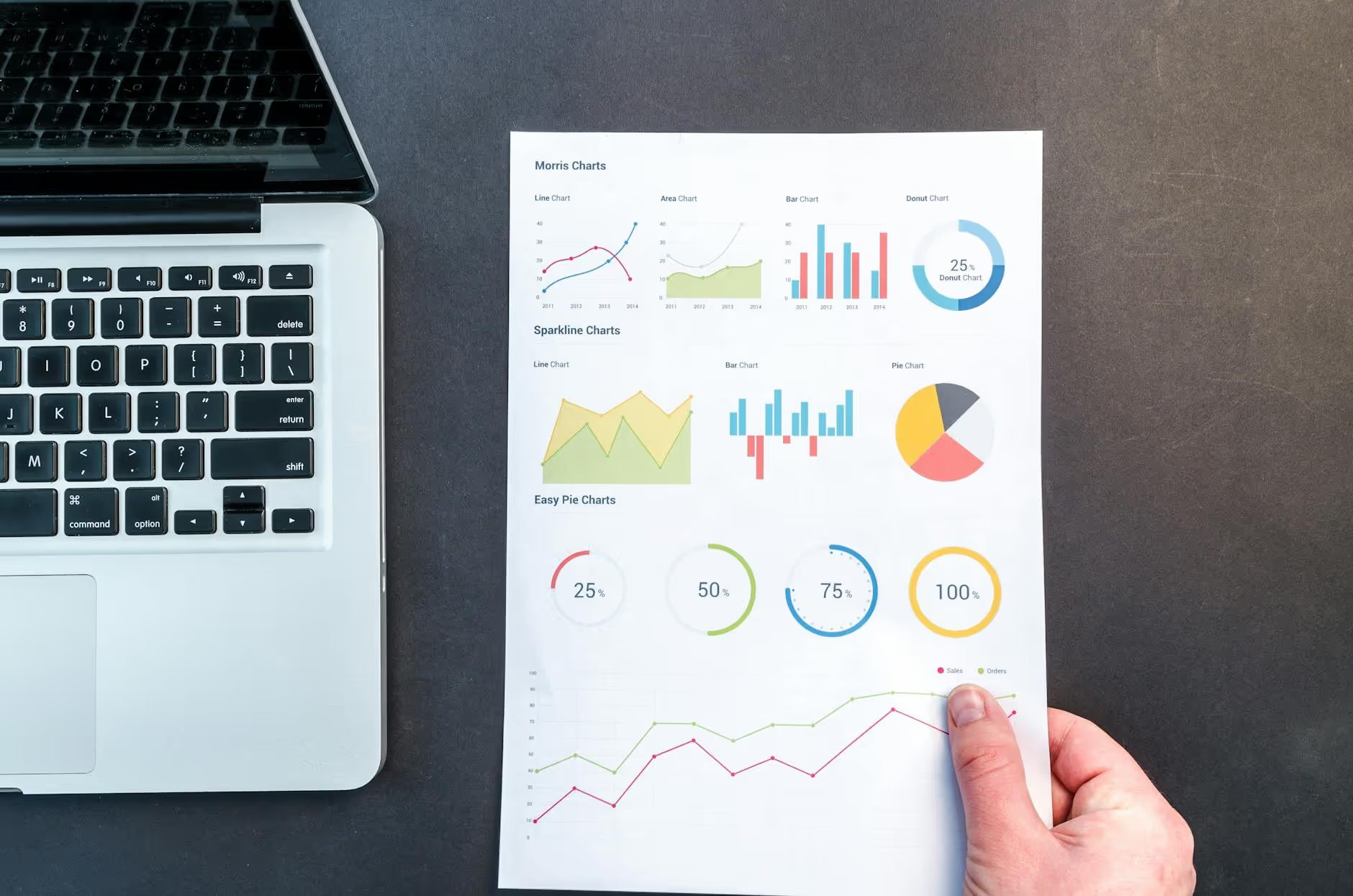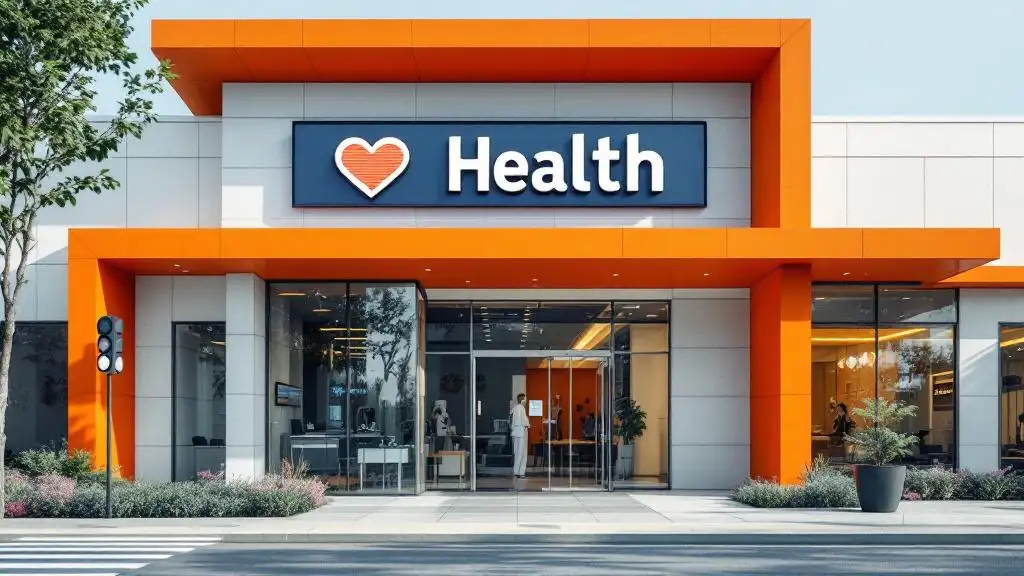On-Site SEO: Boost Your Websites Visibility


On-Site SEO: Boost Your Websites Visibility
Understanding On-Site SEO
To effectively boost a website's visibility and improve its search engine rankings, it is crucial to understand the concept of on-site SEO. This section will provide a clear definition of on-site SEO and highlight its importance. Additionally, we will explore the key components involved in on-site SEO.
Definition and Importance
On-site SEO, also known as on-page SEO, refers to the process of optimizing webpages and their content to improve their visibility on search engines and attract more organic traffic [1]. It involves optimizing various elements on a website to make it more search engine and user-friendly.
The importance of on-site SEO cannot be overstated. By implementing effective on-site SEO strategies, website owners can enhance their chances of ranking higher on search engine result pages (SERPs) and driving relevant traffic to their site. This, in turn, can lead to increased visibility, brand exposure, and potential conversions.
Components of On-Site SEO
On-site SEO encompasses several key components that contribute to the overall optimization of a website. These components work together to improve search engine visibility and user experience. Some of the essential components of on-site SEO include:
- Title Tags and Meta Descriptions: Optimizing title tags and meta descriptions with relevant keywords helps search engines understand the content of a webpage and display accurate snippets in search results. It also encourages users to click through to the website.
- Image Optimization and Alt Text: Optimizing images by providing descriptive alt text and reducing file sizes can improve website performance and accessibility. Proper image optimization helps search engines understand the context of the images and can lead to increased organic traffic.
- Internal Linking Strategies: Incorporating internal links within website content helps search engines discover and navigate through different pages of a website. Internal links also contribute to better user navigation and engagement. By strategically linking related content, website owners can improve the overall structure and indexability of their site.
These are just a few examples of the components involved in on-site SEO. Other factors, such as site speed optimization, mobile-friendliness, and URL structure, also play a crucial role in enhancing a website's visibility and user experience.
Understanding and implementing these on-site SEO components will contribute to improving search engine rankings and attracting more organic traffic to a website. It is worth noting that on-site SEO should be complemented by off-site SEO strategies for a comprehensive and well-rounded approach to search engine optimization.
Key Elements of On-Site SEO
To optimize your website for search engines, it's crucial to understand the key elements of on-site SEO. By focusing on these elements, you can improve your website's visibility and increase its chances of ranking higher in search engine results. The key elements of on-site SEO include title tags and meta descriptions, image optimization and alt text, and internal linking strategies.
Title Tags and Meta Descriptions
Title tags and meta descriptions are important HTML elements that play a significant role in on-site SEO. The title tag is a piece of HTML code that indicates the title of a webpage. It not only helps search engines understand the topic and relevance of your page but also influences whether a user decides to click on your page in search engine results [1].
Meta descriptions, on the other hand, provide a concise summary of the content on a webpage. While they don't directly impact rankings, well-crafted meta descriptions can influence click-through rates by providing users with a preview of what they can expect on the page. It's important to optimize title tags and meta descriptions by incorporating relevant keywords and creating compelling and informative descriptions to entice users to click on your page.
Image Optimization and Alt Text
Image optimization is another crucial aspect of on-site SEO. Optimizing images can improve overall rankings, user experience, and visibility in image results. Best practices for image SEO include choosing the best file format, compressing images to minimize size without degrading quality, providing alt text for images, and lazy-loading images to improve site performance.
Alt text, or alternative text, is descriptive text that is added to an image's HTML tag. It serves two purposes: providing a textual description of the image for users who are visually impaired or unable to view the image, and helping search engines understand what the image is about. Including relevant keywords in alt text can improve the visibility of your images in search engine results and drive traffic to your website.
Internal Linking Strategies
Internal linking is an important on-site SEO strategy that involves linking to other pages within your website. Internal links play a crucial role in guiding users to relevant content on your site, keeping them engaged and reducing bounce rates. Additionally, internal links help search engines understand the structure and hierarchy of your website, indicating which pages are important and relevant.
When implementing internal links, focus on using descriptive anchor text that accurately represents the content of the linked page. This helps search engines and users understand the context of the linked page. Additionally, consider creating a logical site architecture that allows for easy navigation and ensures that all pages are easily accessible. For more insights on site architecture and its impact on SEO, you can refer to our article on site architecture SEO.
By optimizing title tags and meta descriptions, incorporating alt text in images, and implementing effective internal linking strategies, you can enhance the on-site SEO of your website. These key elements contribute to improving the visibility, relevance, and user experience of your web pages, ultimately increasing your website's chances of ranking higher in search engine results. For more information on on-site SEO best practices, refer to our article on why use SEO marketing.
Best Practices for On-Site SEO
To optimize your website for search engines, it's essential to implement best practices for on-site SEO. This involves focusing on various aspects such as writing unique and relevant content, strategic keyword placement, and improving page load speed.
Writing Unique and Relevant Content
Content is a vital component of SEO, helping to reach and engage audiences. It's important to create educational, interesting, relevant, and shareable content to attract and retain visitors. By delivering valuable content, you can build trust with your audience and establish yourself as an authoritative source in your industry.
When creating content, consider the following tips:
- Conduct thorough keyword research to understand the terms and phrases your target audience is searching for [4].
- Utilize a mix of short-tail keywords, long-tail keywords, and local keywords to optimize your content for different search queries.
- Incorporate keywords naturally into your content, including headings, subheadings, and body text, but avoid keyword stuffing.
- Provide answers to common questions and address pain points that your target audience may have.
- Use different formats like blogs, infographics, videos, and influencer marketing to diversify your content and engage a wider audience.
Remember, the goal is to create content that not only appeals to search engines but also provides value to your users.
Strategic Keyword Placement
Keywords play a crucial role in SEO as they connect brands with prospects who are actively searching for their products or services. To optimize your website for search engines, it's important to choose well-researched keywords and strategically place them throughout your content [4].
Consider the following tips when it comes to keyword placement:
- Optimize your title tags, meta descriptions, and URLs with relevant keywords to improve the visibility of your web pages in search results.
- Incorporate keywords naturally into your headings, subheadings, and body text, ensuring that they flow seamlessly within the content.
- Use variations of your target keywords to capture a wider range of search queries.
- Regularly analyze and update your keyword strategy based on the latest trends and search behavior of your target audience.
By strategically placing relevant keywords throughout your website, you can increase its visibility and attract more organic traffic.
Improving Page Load Speed
Page load speed is a crucial factor in both user experience and search engine rankings. Slow-loading websites can lead to higher bounce rates and negatively impact your search visibility. Therefore, it's important to optimize your website's page load speed to provide a seamless browsing experience for your visitors.
Consider the following tips to improve page load speed:
- Optimize and compress your website's images to reduce their file size without compromising quality. Provide descriptive alt text for images to enhance their accessibility and SEO value.
- Minify your HTML, CSS, and JavaScript files to eliminate unnecessary code and reduce file sizes.
- Enable browser caching to store certain elements of your website on users' devices, allowing for faster subsequent page loads.
- Utilize content delivery networks (CDNs) to distribute your website's content across multiple servers, reducing the distance between users and your website's resources, resulting in faster load times.
- Regularly monitor your website's performance using tools like Google PageSpeed Insights or GTmetrix, and make necessary optimizations to improve load speed.
By prioritizing page load speed, you can enhance the user experience and increase the likelihood of visitors staying on your website longer, ultimately improving your search engine rankings.
Optimizing your website for on-site SEO involves implementing best practices like writing unique and relevant content, strategically placing keywords, and improving page load speed. By focusing on these key elements, you can boost your website's visibility in search engine results and attract more organic traffic to your site.
Google's Perspective on On-Site SEO
When it comes to on-site SEO, understanding Google's perspective can provide valuable insights into optimizing your website for better visibility in search results. Google continuously updates its algorithm, but it consistently emphasizes the importance of user experience and search intent alignment. Let's explore these two key aspects in more detail.
User Experience Prioritization
Google recognizes the significance of user experience when ranking web pages. It recommends focusing on "people-first content" that delivers value to visitors [1]. By prioritizing user experience, you can create a website that engages and satisfies your audience, leading to longer visit durations, lower bounce rates, and increased conversions.
To enhance user experience, consider the following factors:
- Page load speed: Ensure that your website loads quickly to prevent users from becoming frustrated and leaving. This can be achieved by optimizing image sizes, minimizing code, and leveraging caching techniques.
- Mobile-friendliness: With the majority of searches happening on mobile devices, it's crucial to provide a seamless experience across different screen sizes. Optimize your website to be mobile-friendly and responsive, allowing users to navigate and interact with ease.
- Secure connection (HTTPS): Google prioritizes websites with secure connections. Implementing HTTPS not only protects user data but also instills trust and confidence in your visitors.
By understanding and addressing these elements, you can enhance the overall user experience of your website, making it more appealing to both visitors and search engines.
Search Intent Alignment
In recent years, search engines have become more sophisticated in understanding user intent behind search queries. While keywords are still relevant, the focus has shifted toward creating content that fulfills the specific needs of users, rather than solely relying on keyword repetition or placement [5]. By aligning your content with search intent, you increase the likelihood of ranking well on Google.
To align your content with search intent, consider the following strategies:
- Understand the different types of search intent: Familiarize yourself with the four main types of search intent: informational, navigational, transactional, and commercial investigation. Tailor your content to match the intent behind specific search queries, providing the relevant information or solutions users are seeking.
- Create comprehensive and relevant content: Develop high-quality content that thoroughly addresses the topic or query at hand. Consider user expectations and provide valuable information, ensuring that your content is well-researched, accurate, and up-to-date.
By aligning your content with search intent, you can establish your website as a valuable resource, increasing the chances of attracting organic traffic and improving your search engine rankings.
Understanding Google's perspective on on-site SEO is essential for optimizing your website to meet its guidelines and rank well in search results. By prioritizing user experience and aligning your content with search intent, you can improve the visibility and relevance of your website, ultimately attracting more organic traffic and achieving your SEO goals.
Technical Aspects of On-Site SEO
To ensure optimal visibility and performance in search engine rankings, it is essential to focus on the technical aspects of on-site SEO. These technical elements play a crucial role in enhancing your website's visibility and user experience. Three key technical aspects to consider for on-site SEO are page load speed optimization, mobile-friendliness, and secure connection (HTTPS).
Page Load Speed Optimization
Page loading speed is a critical factor for both user experience and search engine rankings. Google, in particular, emphasizes the importance of optimizing site speed to ensure fast loading times, especially on mobile devices. A website that loads quickly provides a better user experience and can potentially improve search rankings. According to Semrush, optimizing site speed is recommended to make a site load as quickly as possible. To improve page load speed, consider compressing images, minimizing code, leveraging browser caching, and using a content delivery network (CDN) to deliver content efficiently.
Mobile-Friendliness
As more users access the internet through mobile devices, Google prioritizes mobile-friendliness when ranking pages. It is crucial to ensure that your website is mobile-responsive and provides a seamless experience across different screen sizes. A mobile-friendly website not only improves user experience but also has a positive impact on search rankings. According to the Digital Marketing Institute, ensuring your website is mobile-responsive can improve rankings and user experience. To achieve mobile-friendliness, use responsive design techniques, optimize images for mobile, and ensure touch-friendly elements.
Secure Connection (HTTPS)
Google places a significant emphasis on website security, giving preference to secure websites with HTTPS encryption. Implementing HTTPS is crucial for maintaining the privacy and integrity of user data, as well as improving your site's credibility and rankings. According to 95Visual, Google gives preference to secure websites with HTTPS encryption. To enable HTTPS, obtain an SSL/TLS certificate and configure your website to redirect HTTP traffic to HTTPS. This not only protects user information but also enhances user trust and search engine visibility.
By optimizing these technical aspects of on-site SEO, you can enhance your website's performance, improve user experience, and boost your search engine rankings. Remember that technical SEO works hand in hand with on-page and off-page SEO strategies.
Enhancing On-Site SEO Performance
To maximize the effectiveness of your SEO efforts, it's essential to understand the different aspects of on-site and off-site SEO. Let's explore the distinctions between on-page and off-page SEO, as well as the benefits of combining these strategies.
On-Page vs Off-Page SEO
On-page SEO, also known as on-site SEO, involves optimizing various front-end and back-end components of your website to improve its visibility and ranking on search engines. It focuses on elements within your website that you have direct control over, such as content, site architecture, and HTML elements.
Key components of on-page SEO include:
- Content Optimization: Writing unique, relevant, and high-quality content that incorporates target keywords strategically [3].
- Site Architecture: Organizing your website in a logical and user-friendly manner, ensuring easy navigation and proper URL structure [6].
- HTML Elements: Optimizing HTML elements such as title tags, meta descriptions, and header tags to provide search engines with relevant information about your webpages [7].
On the other hand, off-page SEO refers to activities conducted outside of your website to improve its visibility and reputation. It focuses on building external relationships and generating high-quality backlinks to your website. Off-page SEO strategies include link building, social media mentions, and guest posting.
While on-page SEO ensures that your website is optimized for search engines, off-page SEO helps establish your website's authority and reputation in the online world. Both approaches are essential for a comprehensive SEO strategy.
On-Site SEO vs Off-Site SEO
On-site SEO and off-site SEO are two fundamental aspects of search engine optimization. On-site SEO focuses on optimizing your website's content, structure, and HTML elements to enhance its visibility and ranking on search engine result pages (SERPs) [4]. It involves making strategic keyword placements, improving page load speed, and prioritizing user experience [8].
In contrast, off-site SEO involves activities conducted outside of your website to increase its visibility and reputation. This includes building high-quality backlinks, generating social media mentions, and creating press releases to gain exposure [8].
While on-site SEO focuses on optimizing your website's components, off-site SEO emphasizes building relationships and establishing your website's authority in the online landscape. Both strategies are vital for achieving long-term SEO success.
Combining On-Site and Off-Site Strategies
The most effective SEO campaigns combine on-site and off-site strategies to achieve optimal results. By leveraging on-site SEO techniques, you can ensure that your website is well-structured, optimized for target keywords, and provides a seamless user experience. This, in turn, lays a solid foundation for off-site SEO efforts.
Off-site SEO complements on-site optimization by generating high-quality backlinks, increasing your website's visibility through social media, and boosting your online reputation. These activities signal to search engines that your website is a trustworthy and authoritative source in your industry.
By combining on-site and off-site SEO strategies, you can enhance your website's visibility, attract more relevant traffic, and ultimately drive conversions. Remember, search engine optimization is an ongoing process, and continuously refining both on-site and off-site elements will help you stay ahead in the ever-evolving digital landscape.
To learn more about the technical aspects of on-site SEO, such as page load speed optimization, mobile-friendliness, and secure connections, refer to our section on why is technical SEO important?.
References
[1]: https://www.semrush.com/blog/on-page-seo/
[2]: https://www.semrush.com/blog/seo-best-practices/
[3]: https://blog.hubspot.com/blog/tabid/6307/bid/33655/a-step-by-step-guide-to-flawless-on-page-seo-free-template.aspx
[4]: https://digitalmarketinginstitute.com/blog/what-is-seo-and-why-is-it-important
[5]: https://moz.com/learn/seo/on-site-seo
[8]: https://www.95visual.com/resources/articles/difference-between-onsite-offsite-seo







